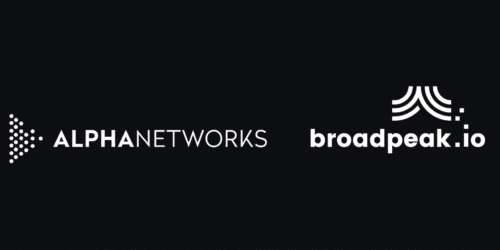We have created two blog series, one about FAST and another about target TV advertising. If you are lost among the all those specific terms, you can now find here a glossary .
| Term | Description |
|---|---|
| Ad | Short for Advertisement, See Advertisement. |
| Ad Creative | An Ad Creative is the ad video – possibly in different formats to suite the different end user devices. |
| Ad Inventory | Advertising inventory is the number of ad spots/slots, or ad space, a publisher has available to sell to an advertiser. |
| Ad Pod | An Ad Pod is a group of ads expected to play back-to-back in one commercial ad break, similar to how consumers experience traditional commercial ad breaks in broadcast television. Ad Pods can be of varying lengths and can be inserted at any point in a stream of content (pre, mid, or post). |
| Ad-Insertion | See Dynamic Ad Insertion (DAI). |
| Ad-Replacement | See Dynamic Ad Substitution (DAS). |
| Adaptive Bitrate Streaming (ABR) | Adaptive Bitrate Streaming is a technical process that adjusts the quality of a video delivered to the client/video player of a connected device based on changing network conditions, video buffer status, and CPU utilization to ensure the best possible viewer experience. The video quality is determined and set by real time detections of a user’s available bandwidth (throughput), video buffer capacity and CPU utilization. Based on these conditions the bitrate is adjusted in real time to ensure the best possible quality. |
| Addressable TV Advertisement (ATV) | An Addressable TV Advertisement refers to the capacity to provide different advertisements to each individual terminal displaying the same broadcast TV feed or VOD asset. |
| Advanced TV Advertisement | Advanced TV Advertisement is an umbrella term for the use of digital technology and data for TV advertisements. |
| Advertisement | An Advertisement is a paid, mediated, form of communication designed to persuade the receiver to take some action, now or in the future. Also called a Commercial |
| Advertiser | A company that advertises its products or services. |
| Association Française pour le développement des services et usages Multimédias Multi-opérateurs (AF2M) | This is the French association for the development of multi-operator multimedia services. |
| Attention Cost Per Mille (aCPM) | This stands for “Attention Cost Per Thousand” or the cost for one second of effective attention per thousand. aCPM is a realistic result of how long an ad is effectively viewed which is measured in cost per thousand per seconds. |
| Automated Content Recognition (ACR) | Automated Content Recognition is an opt-in identification technology embedded in a device that allows content to be recognized by video, audio or watermark cues and matched back to a database for verification. This technology can recognize content regardless of its distribution source (i.e. OTT, linear, etc.). |
| Brand | See Advertiser. |
| Brand Awareness | Brand Awareness is a marketing term that describes the degree of consumer recognition of a product by its name. Creating brand awareness is a key step in promoting a new product or reviving an older brand. Ideally, awareness of the brand may include the qualities that distinguish the product from its competition. |
| Brand Safety | Brand Safety is the importance of placing advertising and brand promotion in environments that do not damage the brand through perceived association with inappropriate content. |
| Broadcaster | This is an owner and broadcaster of linear TV feeds. |
| Browser Cookie | A Browser Cookie is a small text file created by a website that is stored in the user’s browser either temporarily for that session only or permanently on the hard disk (persistent cookie). Cookies provide a way for the website to recognize you and keep track of your preferences. |
| Catchup-TV | Catchup-TV refers to TV programs aired on Linear TV that are automatically recorded by the TV service provider or broadcaster and made available to watch during or after the program airing. |
| Client-Side Ad Insertion (CSAI) | Client-Side Ad Insertion is the method of delivering ads to clients (desktop, mobile, CTVs, gaming consoles, etc.) where the client (video player) requests the ad server for an ad when it reaches certain ad-markers in the stream or in the manifest (HLS/DASH). Upon receiving the request from the client, the ad server responds with the “right” ad for the client based on data collected from the client and other information (campaigns, preferences, etc.). The video player then pauses the video, plays the ad (or group of ads), and then resumes video playback (if any). It is also the responsibility of the client to report on the ad metrics (playback, quartiles, interactives, etc.). |
| Cohort | Cohort, also known as Target Audience, is a specified audience or demographic group for which an advertising message is destined. |
| Commercial | See Advertisement. |
| Connected TV Advertising | Connected TV advertising is delivering targeted advertising to the following ABR streaming device categories: • Smart TV’s – such as Samsung Tizen, LG Web OS based TVs etc.; • Streaming devices and HDMI dongles – such as Amazon FireTV, Roku, Apple TV and Google Chromecast etc.; • Game consoles – such as PlayStation, Xbox etc.; • Operator STBs – those able to receive ABR streamed video, either pure OTT/ABR or Hybrid STB. |
| Consent | This refers to viewer consent via opt-in to process personal data to perform targeting, constituting a legal base for this kind of data processing. In addition, users have the option to decline the consent request via opt-out completely or select certain purposes within the consent request (partial opt-in). Serving personalized advertising requires an active user opt-in, while non-personalized advertising may also be played out without explicit consent. |
| Content Rights | Content Rights refer to copyright and other Intellectual Property rights relating to audiovisual, audio and/or data materials. |
| Conversion | Conversion is an action that is counted when someone interacts with your ad (for example, clicks a text ad or views a video ad) and then performs an action that has been defined as valuable to your business, such as an online purchase or a call to your business from a mobile phone. |
| Cost Per Mille (CPM) | Cost Per Thousand (CPM – derived from the French coût par mille) is the cost an advertiser pays to deliver 1,000 ad impressions. CPM = total cost/impressions x 1000. CPM is calculated by dividing the cost of an advertising placement by the number of people or impressions it delivers (expressed in thousands). |
| Data-Driven Linear (DDL) TV Advertisement | Data-Driven Linear (DDL) TV Advertisement is the ability to use different data sets including demographics, interests, and viewing behavior to optimize a linear TV schedule that uses specific networks and dayparts to better reach an advertiser’s audience. |
| Demand Side Platform (DSP). | Demand Side Platform is a technology platform that allows buyers of digital advertising inventory to manage multiple ad exchanges and data exchange accounts through one interface. |
| Demographics | Demographics are the basic objective descriptive classifications of consumers, such as their age, sex, income, education, size of household, ownership of home, etc. |
| Digital Advertising | Digital Advertising is promotional material delivered to a target audience through digital platforms, including social media, email, search engines, mobile apps, affiliate programs, and websites. One of the main benefits of digital advertising is an advertiser can track in real time the success of the campaign. The goal of digital advertising is to inorganically advertise where consumers are and to customize ads to the target audience’s preferences. |
| Digital Display Advertising | Digital Display Advertising is graphic advertising on internet websites, apps or social media through banners or other advertising formats made of text, images, flash, video, and audio. The main purpose of display advertising is to deliver general advertisements and brand messages to site visitors. A display ad is usually interactive (i.e., clickable), which allows brands and advertisers to engage deeper with the users. A display ad can also be a companion ad for a non-clickable video ad. |
| Direct Ad Sales | Direct Ad Sales is a one-on-one deal between publishers and advertisers, cutting any middleman—ad network, SSP, DSP or any other ad agency. |
| Direct to Consumer (D2C) | Direct to Consumer refers to delivering content without using a middleman. For example, Netflix serves its content direct to consumers without using a network. |
| Dynamic Ad Insertion (DAI) | Dynamic Ad Insertion is a process in which an ad is inserted before/during/after video content, e.g. as Pre-Roll / Mid-Roll / Post-Roll. These ads are being played out in an addressed (personalized) form in the context of Addressable TV (ATV) (cf. also Targeting). Depending on whether the advertising spot is inserted on the client’s side (i.e., in the consumer device) or by the server, a distinction is respectively made between Client-Side Ad Insertion (CSAI) and Server-Side Ad Insertion (SSAI). |
| Dynamic Ad Substitution (DAS) | Dynamic Ad Substitution is a process (also called ad replacement) where an ad within video content is replaced by another, personalized (addressed) spot (cf. also Targeting). Depending on whether the advertising spot is inserted on the client’s side (i.e., in the consumer device) or by the server, a distinction is respectively made between Client-Side Ad Substitution (CSAS) and Server-Side Ad Substitution (SSAS). |
| First-Party Cookie | A First-Party Cookie is a browser cookie, created by the website you are visiting. It allows site owners to collect customer analytics data, remember language settings, and carry out other useful functions that help provide a good user experience. |
| First-Party Data | First-Party Data is company-owned data about consumers that is collected by companies through their interactions with consumers. First party data can include data from behavior, actions or interests demonstrated across website(s); data collated through CRM; subscription data; or cross-platform data from mobile web or apps. |
| Frequency | Frequency is the number of times an individual is exposed to an ad, within a given time period. |
| Frequency Capping | Frequency Capping is a predefined limit (e.g., for a Unique Device ID, a household, or a user) for the maximum number of playouts or displays of a specific personalized advertisement within a given time frame. |
| General Data Protection Regulation (GDPR) | The General Data Protection Regulation (GDPR) is a regulation in EU law on data protection and privacy in the European Union (EU) and the European Economic Area (EEA). It also addresses the transfer of personal data outside the EU and EEA areas. |
| IAB | The Interactive Advertising Bureau (IAB) is an advertising business organization that develops industry standards, conducts research, and provides legal support for the online advertising industry. The organization represents many of the most prominent media outlets globally, but mostly in the United States, Canada and Europe. |
| In-stream Video Advertising | In-stream Video Advertising is played before, during or after the streaming video content that a consumer has requested (Pre-roll, Mid-roll, Post-roll). These ads cannot typically be stopped from being played (particularly with pre-roll) but can sometimes be skipped. This format is frequently used to monetize the video content that the publisher is delivering. |
| Multichannel Video Programming Distributor (MVPD) | See TV Service Provider. |
| Network Personal Video Recorder (nPVR) | Network Personal Video Recorder refers to a service where an individual subscriber can make personal recordings of Linear TV programs and request their playback at a later time. This specifically refers to a Shared Copy mode implementation. |
| Open Marketplace | Open Marketplace is a biddable open market system in which any seller can make digital ad inventory available for purchase by any buyer. Supply and demand determine the price at which the inventory is traded. A seller of inventory can set the terms around which they make inventory available to the open exchange, including setting floor prices, establishing blacklists etc. An open marketplace can also be used to make third-party data sets available for advertisers to purchase. |
| Out-stream Video Advertising | Out-stream Video Advertising is a form of video advertising that takes place outside of In-Stream Video content. One type of outstream video is in-feed video ads which are found in content, social, or product feeds. Another type of outstream video ad is in-article video ads that are served between text. |
| Pre-Roll / Mid-Roll / Post-Roll | These are commercials (advertisements) inserted at the beginning of / during / at the end of a piece of content. |
| Programmatic TV Advertising | Programmatic TV Advertising is the use of technology to more efficiently allocate ad placements on television. This typically uses algorithms to evaluate the demand of ads against available supply. |
| Quality of Experience (QoE) | Quality of Experience (QoE) is a measure of the delight or annoyance of a customer’s experiences with a service. |
| Reach | Reach refers to the estimated number of individuals in an audience for a broadcast that is reached by an ad at least once during a specific period of time. |
| Real Time Bidding (RTB) | Real Time Bidding is a type of programmatic buying where multiple parties (advertisers) submit bids on ad inventory in a real time, instantaneous auction that occurs via a supply side platform (SSP) during the time it takes the web page to load. Real time bidding is the primary programmatic transaction type that occurs with open exchange trading. |
| Remote Storage Digital Video Recorder (RS-DVR) | Service where an individual subscriber is enabled to make personal recordings of Linear TV programs and request their playback at a later time. This specifically refers to a Private Copy mode implementation. |
| Retargeting | Retargeting, also known as remarketing, is a form of online advertising that can help you keep your brand in front of bounced traffic after they leave your website. For most websites, only 2% of web traffic converts on the first visit. Retargeting is a tool designed to help companies reach the 98% of users who don’t convert right away. |
| SCTE-35 | SCTE-35 (ANSI/SCTE 35 2013) is a joint ANSI/Society of Cable and Telecommunications Engineers standard that describes the inline insertion of cue tones in MPEG-TS streams and is used to signal ad replacement and/or Ad insertion opportunities. The full standard name is “Digital Program Insertion Cueing Message for Cable.”. |
| Second-Party Data | Second Party Data is first party data that advertisers have purchased directly from the source. |
| Server-Side Ad insertion (SSAI) | Server-Side Ad Insertion (often referred to as “ad stitching”) is the process of stitching video content and ads together on the server-side level rather than on the browser level (Client-Side Ad Insertion). Videos and video ads are coming from different places—videos typically come from a content delivery network (CDN) and ads from an ad server (video ads can also be served from CDNs, although content CDNs and ad CDNs often differ). These are then combined on the fly when people start watching videos. With server-side ad stitching, that combination of video and advertising happens on the backend. Server-side ad insertion allows for smoother ad user experiences as users do not have to wait for players to fetch ads and render them in real time. The stitching is all done prior to the user getting the ad break/pod. In the ad stitching process, ad specs are matched with content specs resulting in more consistent viewer experience as the ad quality will match the content quality. SSAI also allows publishers to mitigate ad blocking, as video content and ads are stitched together as a cohesive stream on the server side which allows them to bypass browser or device-level detection/blocking. When a browser or device-level script makes a call to the ad-decisioning system, the ad blocker can identify that signal, as opposed to a server-side script where the ads are already stitched into the player’s content, making it impossible to distinguish an ad from content. |
| Set-Top Box (STB) | A set-top box is a peripheral device that connects to a TV set and enables it to receive and decode digital television (DTV) broadcasts. DTV set-top boxes are sometimes called receivers. |
| SNPTV organization | Le Syndicat National de la Publicité Télévisée (SNPTV) is a French organization in charge of TV advertising. |
| Supply Side Platform (SSP) | SSP is the technology that enables the selling of digital ad impressions in automated transactions. Publishers (i.e. inventory supply side) can sell and manage display, video or native ad inventory on desktop, mobile and connected TV through SSPs. |
| Targeting | Targeting, also known as multisegment marketing, is a marketing strategy that involves identifying specific personas or markets for specific advertising campaigns. Companies use target marketing to present advertisements to specific groups to maximize response. This strategy is much more effective than mass marketing, as it targets the consumers most likely to interact with the brand or product, based on a buyer persona. There are many key targets, these are the most common: Demographic targeting: These targets are based on age, gender, ethnicity, race, income, education, religion, economic status and more, and are extremely commonly used in all types of marketing. Geographic targeting: This targeting is based on a certain location and can be as broad as a country or region, or as specific as a city or neighborhood. Also known as geo-targeting or geofiltering, gathering geographic information (such as city, state, IP address) and then targeting consumers within certain locations has proven to be a very effective marketing strategy, as it results in ads being sent to exactly the right people in the right place. Psychological and behavioral targeting: This targeting uses personality traits, previous purchases, favorite places, shopping habits, “Likes” on Facebook or Twitter, opinions, etc. |
| Third-Party Cookie | Third-Party Cookies are browser cookies that are set by a website other than the one you are currently on. For example, you can have a “Like” button on your website which will store a cookie on a visitor’s computer, and that cookie can later be accessed by Facebook to identify visitors and see which websites they visited. Such a cookie is a known as a Third-Party Cookie. |
| Third-Party Data | Information about consumer behavior that is collected and aggregated by third party providers, such as Experian, Quantium or Acxiom, that is available to any party to buy. |
| TV Service provider | TV Service providers distribute to their subscribers the TV feeds from multiple broadcasters (Linear TV) and/or aggregate the content of multiple content providers (Video On Demand Service). This covers the traditional Cable MSO and Telco providers (MVPDs) as well as new OTT entrants (FAST/vMVPDs). |
| VAST (Video Ad Serving Template) | A framework for serving ads to a video player. The specification also describes expected player behavior for executing ads that are supplied using VAST. The interaction between the ad and the player is unidirectional, meaning that once the player receives the VAST tag no other interactions are possible except for the activation of select tracking beacons at appropriate times during ad playback. |
| Video On Demand (VOD) | Video content that is controlled, enabled, and consumed whenever a viewer wants. VOD content can be found on set top boxes, OTT devices, mobile web, mobile apps, and video streaming services. |
Endnotes
1 MRC Issues Final Version of Updated Guidance on OTT/CTV and SSAI Digital Video Measurement










